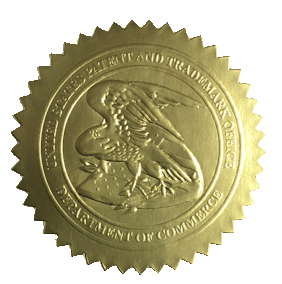
Provisional Application versus Utility Patent Application
September 3, 2021 A business seeking to protect an invention is faced with an early choice on the path to patent protection: file a provisional patent application or to proceed directly to filing a utility patent application. This article describes the differences between utility patent application and provisional patent application.
Utility Patent Application
A utility patent is a property right granted by the United States Patent and Trademark Office (USPTO) to the applicant to exclude others from making, using, or selling the invention claimed and disclosed in the patent for a period of twenty years. Here are examples of patents issued to Welsh IP Law clients: 10,766,197 (Method of Selective Laser Sintering), 10,865,078 (Lifting Assembly for Wind Turbine), 10,753,054 (Anchor System for a Pole Marker).
To obtain a utility patent, the applicant files an application with a detailed written description and figures illustrating the invention, and a number of written claims that define the scope of exclusive rights sought. The USPTO will substantively review the application, conduct a search of the prior art, and issue a determination of patentability. In more than 90% of the cases, the USPTO will issue an office action rejecting one or more claims. The applicant can then respond with claim amendments and/or arguments in favor of patentability. In 2020, the average time from filing to first action was about 14 months and the average total pendency—filing to grant— was 24 months.
Application preparation is based on attorney time and typically varies between $4,800 and $12,500 based on the complexity of the invention. The fee covers work required to prepare the application, including drafting patent claims, drafting the written description, preparing the drawings, and all revisions. In addition, there is filing fee of $1,500.
Provisional Patent Application
A provisional patent application is an optional precursor to a full utility application. A provisional application is a placeholder—an informal written disclosure of the invention filed with the United States Patent and Trademark Office (USPTO). The applicant then has one year to file a utility patent application claiming priority to the provisional patent. The provisional application takes less time to prepare because it does not require claims, formal illustrations, and a formal description. Application preparation is based on attorney time and typically varies between $1,000 and $5,000 based on the complexity of the invention. In addition, there is filing fee of $600.
After filing the provisional application, the applicant has one year to file a utility patent based on the provisional application. The utility patent application must include claims and formal drawings. Claimed subject matter in the utility application is entitled to the priority date of the provisional application to the extent it was adequately described in the provisional application. For this reason, it is important to ensure the provisional application fully describes the invention. The applicant can add new subject matter to the utility application; however, this new subject matter will not receive the provisional filing date.
Reasons to Proceed Directly to a Utility Application
The Applicant must decide whether to file a provisional application or proceed directly to a utility application.
The provisional application may be useful in situations where the applicant does not have all the details on the invention or has a limited budget. It provides flexibility in a filing strategy, so an applicant can use the additional time to consider whether to proceed with a utility application in the U.S. or abroad. In addition, the invention can be marked “patent pending” once the provisional application is filed.
If the invention is fully developed and the applicant intends to seek full patent protection, it may make sense to proceed directly to filing the utility application for several reasons. First, proceeding directly to the utility application will lead to the shortest time to past issuance. The current patent pendency is 24 months, and this period starts when the utility application is filed. A provisional application strategy can delay patent issuance by up to one year. Second, it typically cost less to prepare and file a utility application than to prepare and file both a provisional application and utility application because of the additional formal work required and the additional drafting and revisions that inevitably occur.

Welsh IP Law is an intellectual property law firm based in Fairfield County, Connecticut. Our passion is increasing the value of our client’s business through strategic patent and trademark protection. We work directly with engineers, scientists, and executives to develop and grow intellectual property portfolios that protect and strengthen the client’s business. Our clients include Fortune 500 companies, global brands, family businesses, and start-ups from around the world.

